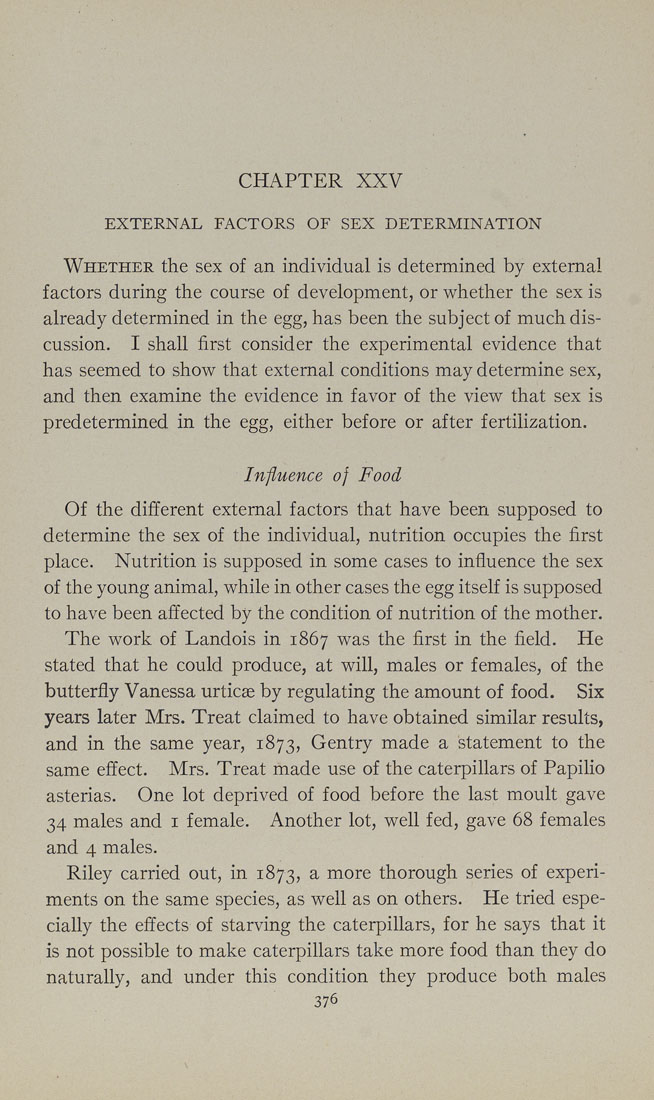CHAPTER XXV
EXTERNAL FACTORS OF SEX DETERMINATION
Whether the sex of an individual is determined by external
factors during the course of development, or whether the sex is
already determined in the egg, has been the subject of much dis¬
cussion. I shall first consider the experimental evidence that
has seemed to show that external conditions may determine sex,
and then examine the evidence in favor of the view that sex is
predetermined in the egg, either before or after fertilization.
Infiuence of Food
Of the different external factors that have been supposed to
determine the sex of the individual, nutrition occupies the first
place. Nutrition is supposed in some cases to influence the sex
of the young animal, while in other cases the egg itself is supposed
to have been aff'ected by the condition of nutrition of the mother.
The work of Landois in 1867 was the first in the field. He
stated that he could produce, at will, males or females, of the
butterfly Vanessa urticee by regulating the amount of food. Six
years later Mrs. Treat claimed to have obtained similar results,
and in the same year, 1873, Gentry made a statement to the
same effect. Mrs. Treat made use of the caterpillars of Papilio
asterias. One lot deprived of food before the last moult gave
34 males and i female. Another lot, well fed, gave 68 females
and 4 males.
Riley carried out, in 1873, a more thorough series of experi¬
ments on the same species, as well as on others. He tried espe¬
cially the effects of starving the caterpillars, for he says that it
is not possible to make caterpillars take more food than they do
naturally, and under this condition they produce both males
376
|








